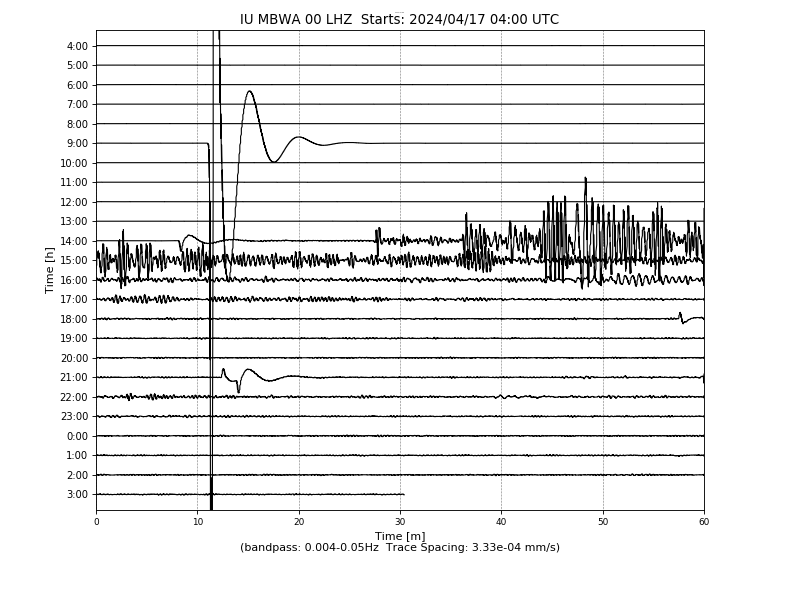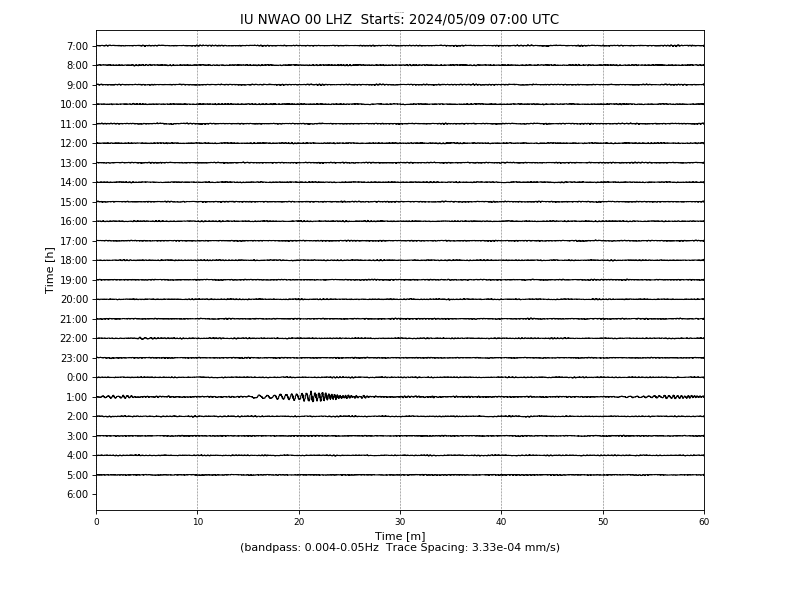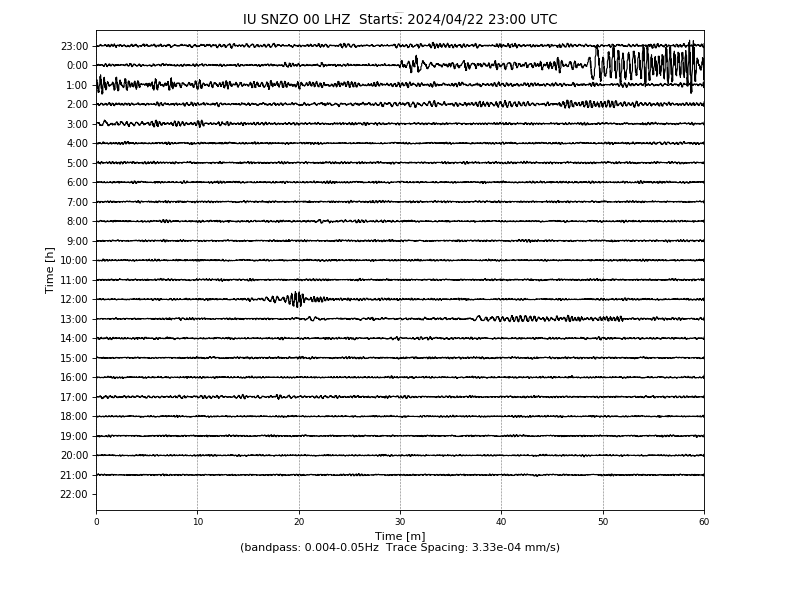Edward
Pigot Seismic Observatory (EPSO), Coonabarabran,
NSW, Australia
The EPSO seismic sensors
are located in the Timor
Valley, 5km west of Coonabarabran,
NSW, Australia. Click on images below
for full sized seismograms. Weather: @EPSO
| Synoptic
| BOM
Radar | Satellite
| BOM
Forecast | Elders | RFS
Hazard | Sentinal Hot
Spots | lightningmaps.org
|
| Axis | Long-period sensors | Short-period sensors |
| EPSO Volksmeter Sensor - North-South - Velocity | EPSO S-6000 Geophone - North-South - Velocity | |
N-S
|
|
|
| EPSO
Volksmeter Sensor
- East West - Velocity |
EPSO S-6000 Geophone - East-West - Velocity | |
E-W
|
|
|
| EPSO S-6000 Geophone - Vertical - Velocity | ||
Z
|
|
|
| EPSO
Array |
||
| N | ||
Z
|
||
| W |
E |
|
Z
|
||
| Last 7 days of EPSO observations | |||||
| Sensor |
Volksmeter (long-period horizontal) |
S6000 (short-period triaxial) |
Willmore (short-period vertical) |
BB-13 (broadband vertical) |
EPSO
Array (3-elements, vertical) |
| Station
Identifier |
Place |
Distance
and bearing from EPSO |
P-wave
travel time from EPSO |
| CTAO | Charters Towers, Qld, Australia | 1277km @ 345.9° | 2:46 |
| SNZO | South Karori, New Zealand | 2530km @ 123.3° | 4:58 |
| NWAO | Narrogin, WA, Australia | 3008km @ 257.9° | 5:43 |
| MBWA | Marble Bar, WA, Australia | 3137km @ 283.8° | 5:54 |
| SWAN |
Swansea, NSW, Australia |
305km @ 132.4° | 48s |
The following table presents seismograms from the above stations
compared with observations from EPSO, along with observations from
the private station at Swansea,
NSW . Click on the images below for full sized
seismograms.
| MBWA - Marble Bar (3137km WNW of EPSO) | EPSO (N-S Axis) - Coonabarabran, NSW | CTAO - Charters Towers (1277km NNE of EPSO) |
 |
 |
|
| NWAO - Narrogin (3008km W of EPSO) | EPSO (E-W Axis) - Coonabarabran, NSW | SWAN - Swansea, NSW - (305km SE of EPSO) |
 |
||
| EPSO (Z Axis, Willmore) - Coonabarabran, NSW | EPSO (Z Axis, BB-13) - Coonabarabran, NSW | SNZO - South Karori (2530km SE of EPSO) |
 |
See something on the
traces? Check them against latest
observations from:-